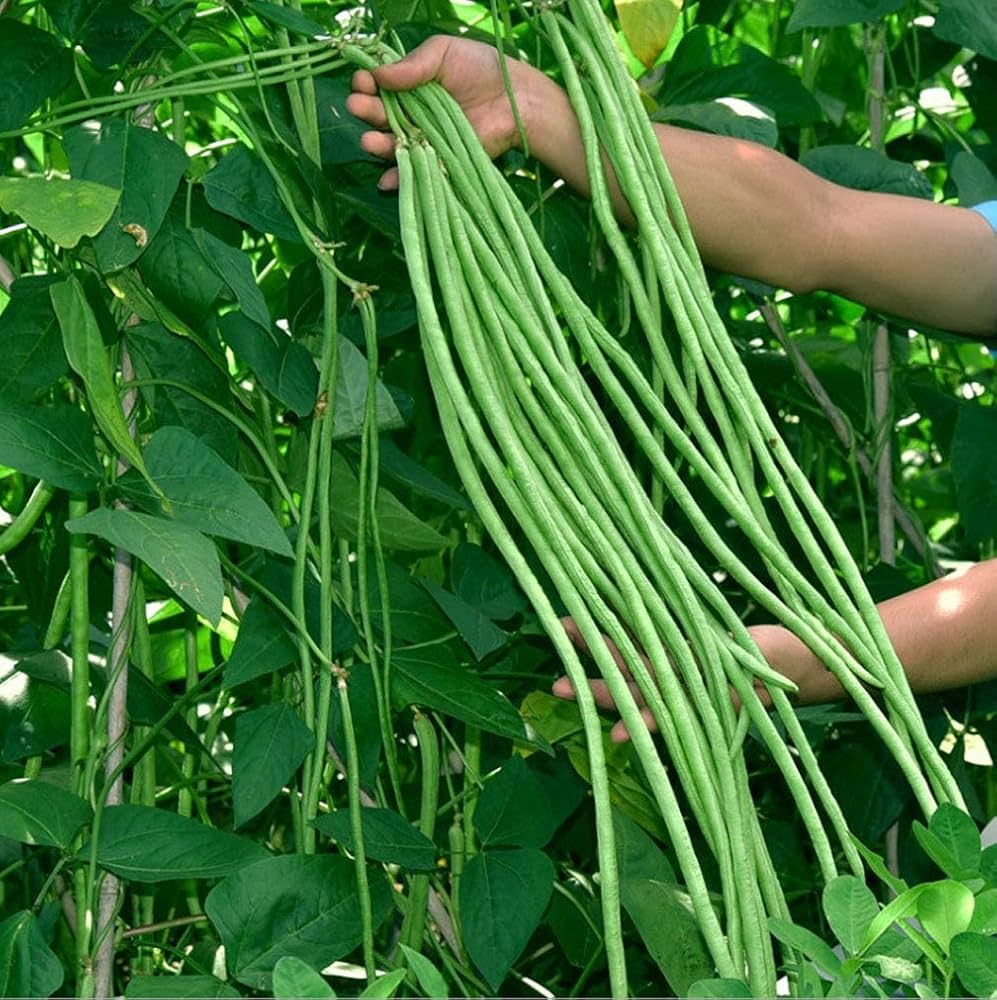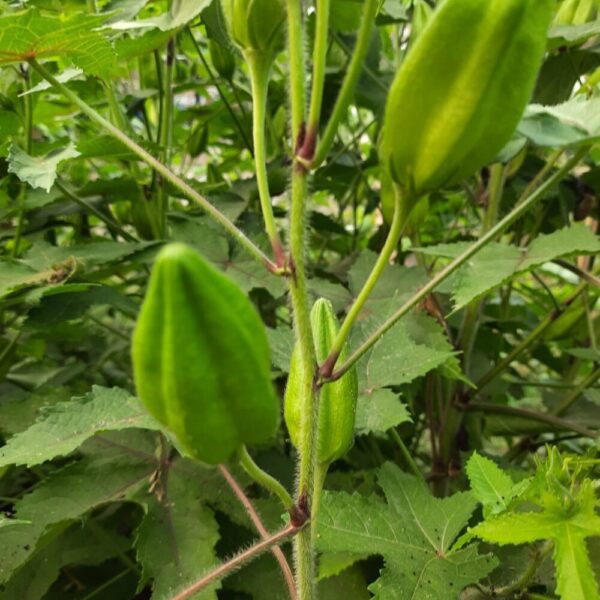Green yard long bean Gardening seeds (Vigna unguiculata subsp. sesquipedalis)
Green yard long beans, also known as asparagus beans, snake beans, or “borboti” in Bengali, are a popular legume in India. They are characterized by their exceptionally long, slender pods that can grow up to 30-40 inches in length. Here’s a guide to growing green yard long beans in India:
Growing Conditions
Climate: Yard long beans thrive in warm, tropical and subtropical climates. They prefer temperatures between 20°C and 35°C (68°F to 95°F). They are sensitive to frost and cold weather, so they should be planted in the warmer months.
Soil: These beans grow best in well-drained, sandy loam to loamy soil, rich in organic matter. The ideal soil pH is between 6.0 and 7.5.
Sunlight: Green yard long bean Gardening seeds require full sunlight, needing at least 6-8 hours of direct sunlight per day for optimal growth.
Watering: Regular watering is crucial, especially during the flowering and pod development stages. However, avoid waterlogging as it can lead to root rot and other diseases.
Planting Method
Seed Preparation: Use high-quality seeds from a reliable source. Soaking the seeds in water for about 2-3 hours before planting can enhance germination.
Planting Time: The best time to plant yard long beans in India is during the early summer (March to April) or during the monsoon season (June to July).
Planting Depth: Sow the seeds about 1 inch deep in the soil.
Spacing: Space the seeds 8-10 inches apart within rows, with rows spaced about 3 feet apart. This spacing allows for adequate air circulation and growth.
Growing and Maintenance
Support Structures: Green yard long bean Gardening seeds are climbing plants and require support structures such as trellises, poles, or fences for the vines to climb. Providing support helps in maximizing space and improving air circulation.
Weeding: Regular weeding is essential to prevent competition for nutrients and water. Mulching can help suppress weeds and retain soil moisture.
Fertilization: Although yard long beans can fix nitrogen in the soil, adding compost or a balanced fertilizer at planting time can promote healthy growth. Supplement with additional fertilizers if needed during the growing season.
Pest and Disease Management: Common pests include aphids, bean beetles, and caterpillars. Use organic pest control methods or insecticidal soap as necessary. To prevent fungal diseases, ensure proper spacing and avoid overhead watering.
Harvesting
Harvest Time: Green yard long bean Gardening seeds are typically ready to harvest 60-70 days after planting. Harvest the pods when they are young, tender, and about 12-18 inches long.
Harvesting Method: Use your hands or garden shears to pick the pods carefully. Regular harvesting encourages the plants to produce more pods.
Utilization
Yard long beans are highly nutritious, rich in protein, vitamins, minerals, and dietary fiber. They are a versatile ingredient in Indian cuisine, often used in stir-fries, curries, salads, and pickles. Their crisp texture and mild flavor make them a popular choice in many dishes.
By following these guidelines, you can successfully grow green yard long beans in India, enjoying their nutritional benefits and adding variety to your home garden.
| Weight | 14 g |
|---|---|
| Dimensions | 11 × 8.5 × 11 cm |








Reviews
There are no reviews yet.